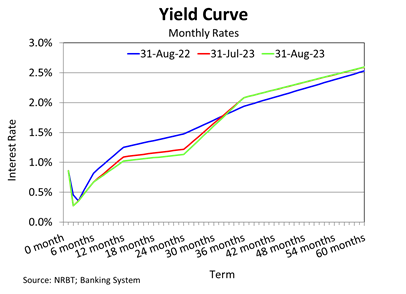The price of imported food still on the rise
- Details
- Category: Economic Releases
- Created: 13 April 2017
| Inflation October 2016 | ||||
| Oct 16 | Sep 16 |
Aug 16 |
Jul 16 |
|
| Headline * | 6.1 | 7.0 | 5.1 | 1.6 |
| Domestic ^ | 2.9 | 4.3 | 2.1 | 0.7 |
| Imported ^ | 3.2 | 2.8 | 3.1 | 1.0 |
| * Year-ended growth | ||||
| ^ Percentage point contribution to year-ended growth | ||||
The annual headline inflation continued rising, reflecting the implication of the amendment to the excise tax on various imported goods which became effective in July 2016. The National Reserve Bank of Tonga (NRBT) projected a 6.7% rise of the annual headline inflation rate in October 2016. However, the annual headline inflation rate rose by 6.1% in October 2016, compared a 1.3% annual deflation recorded in October 2015.
The domestic inflation rose by 2.9% over the year which was mainly driven by higher prices of alcohol and kava, and miscellaneous goods and services with leisure, recreational & craft supplies showing the highest percentage increase of 206.6%. Additionally, annual imported inflation rose by 3.2% due mainly to an increase in the prices of tobacco, and meat, and fish and poultry. On the other hand, the monthly headline inflation rate fell by 0.5% over the month of October 2016 due mainly to a 4.1% fall in the prices of local food.
The monthly domestic inflation declined by 1.8% during October 2016. The prices of local food decreased by 4.1% over the month, which included prices of fruit and vegetables, meats, fish and poultry, and dairy farm & vegetable products. This was largely due to the increase in the supply of these local food products. Various fruits and vegetables were in season resulting in the decrease in prices of watermelon, pineapple, tomatoes, capsicum, and carrots during October 2016. However, in year ended terms, domestic prices increased by 7.0% which stemmed from domestic inflation being at very low levels last year. The shortage of kava Tonga supply has resulted in a rise of its price by 174% over the year. Moreover, the prices of leisure, recreational & craft supplies increased over the year by 206.6%. This was due mainly to a hike in the prices of stamp for air mail to Australia from $0.90 cents to $5.00, starting in January 2016 to date.
Imported inflation rose by 0.5% over the month and 5.5% over the year. The rise during October was due to higher prices in kerosene and petrol. However, over the year imported food had the largest contribution to the imported inflation and hence the annual headline inflation rate. The prices of imported food rose by 9.4% contributing 2.7 percentage points to the annual headline inflation. Within the 2.7 percentage point contribution by imported food to the annual headline inflation, 2.2 percentage points is accounted for by meats, fish, and poultry which reflects the impact of the new custom duties on imported inflation. This was followed by the tobacco and alcohol component which increased by 10.7% and contributed 0.5 percentage point to the annual headline inflation.
The annual core inflation (excluding imported food and energy) rose by 7.6% reflecting the influence global food and oil prices have on inflation. In addition, a significant rise in prices of imported cigarettes and domestic kava as outlined above also contributed to the rise in annual core inflation.
On the outlook, kava prices are likely to be on the rise for some time due to the continued shortage of supply and will contribute to drive domestic inflation higher. Additionally, with the Christmas season coming up, domestic consumption is expected to rise thus driving domestic inflation up. With world oil and food prices slowly on the rise, in conjunction with the added new customs duty since July 2016, imported inflation is anticipated to continue to rise and drive headline inflation higher. The annual headline inflation rate is therefore expected to be around 6.6% in November 2016, and remain within the NRBT’s reference range of 6-8% until December 2016 before declining to below 2%.
Download the full report: Inflation Rate - October 2016

